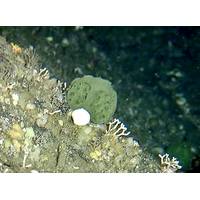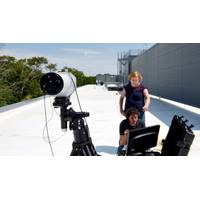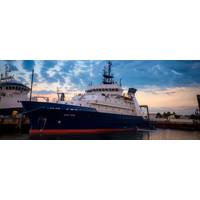
Simple-to-use eDNA Test Will Help Track Marine Species
or invasive species, and ocean exploration “this tool is ready to go.”eDNA across NOAAAcross NOAA, scientists are applying eDNA and other methods for measuring biological molecules - a field called ‘omics - to support sustainable fisheries and aquaculture, discover beneficial chemical compounds, and protect vulnerable species and habitats, such as corals, that provide essential fish habitat and fuel tourism economies. They’re implementing eDNA methods at scale in the ocean, demonstrating its accuracy compared with other techniques, and, as with Gold’s project, proving

A Sea Sponge could Help Battle Cancer
understand why green sponges create such complex chemicals. Sponges typically can’t move. They can’t flee or strike out at would-be predators. Instead, they create chemicals to ward them off, and to adapt to extreme habitats. In the ocean, they’re not alone. More than 12,000 chemical compounds not found in any other living thing have been isolated from marine life that most people pay little attention to. Hamann and Valeriote aren’t like most people. They develop drug leads to treat diseases and look to the oceans for new therapies. This has already led to life-saving
Methane: The Arctic's Buried Treasure
. The third operation was in deep water, where we operated a deep-sea ROV at 2,000m. This activity was also related to investigating biofauna in the dark, chemosynthetic communities, the conditions they live in and the search for new species – these highly specialized species may produce chemical compounds that can be of interest for pharmacy and medical purposes in the future.” CAGE’s goal is to provide new information and improve our understanding of the variability of methane release, which can be related to retreating glaciers from the last glacial until today. Using

Let There Be Laser Light
Department at Woods Hole Oceanographic Institution (WHOI). Michel is engineering new devices that use a technique called laser spectroscopy. Essentially, it shoots a laser beam through air or water to a receiver, measuring the amount of light that emerges at the far end. In between, different chemical compounds will absorb distinct wavelengths of light. “If more of the targeted gas is present in the air or water, less light gets through on the other side,” Michel said. Laser spectroscopy can be used to make highly sensitive measurements of a variety of trace

New Research Ship Sally Ride Sails for Home
oceanographic research vessels and will put that technology to work in missions throughout the northern Pacific Ocean. With it, seagoing scientists will work toward goals of fundamental importance to society: preserving the fisheries that are vital to the world’s food supply, discovering new chemical compounds that are the basis for antibiotics and cancer therapies, avoiding the large-scale instability in natural systems that is a consequence of climate change, and filling in the jigsaw puzzle of global tectonics that lets us understand the risk of seismic events where we live. The ship



 February 2024
February 2024





